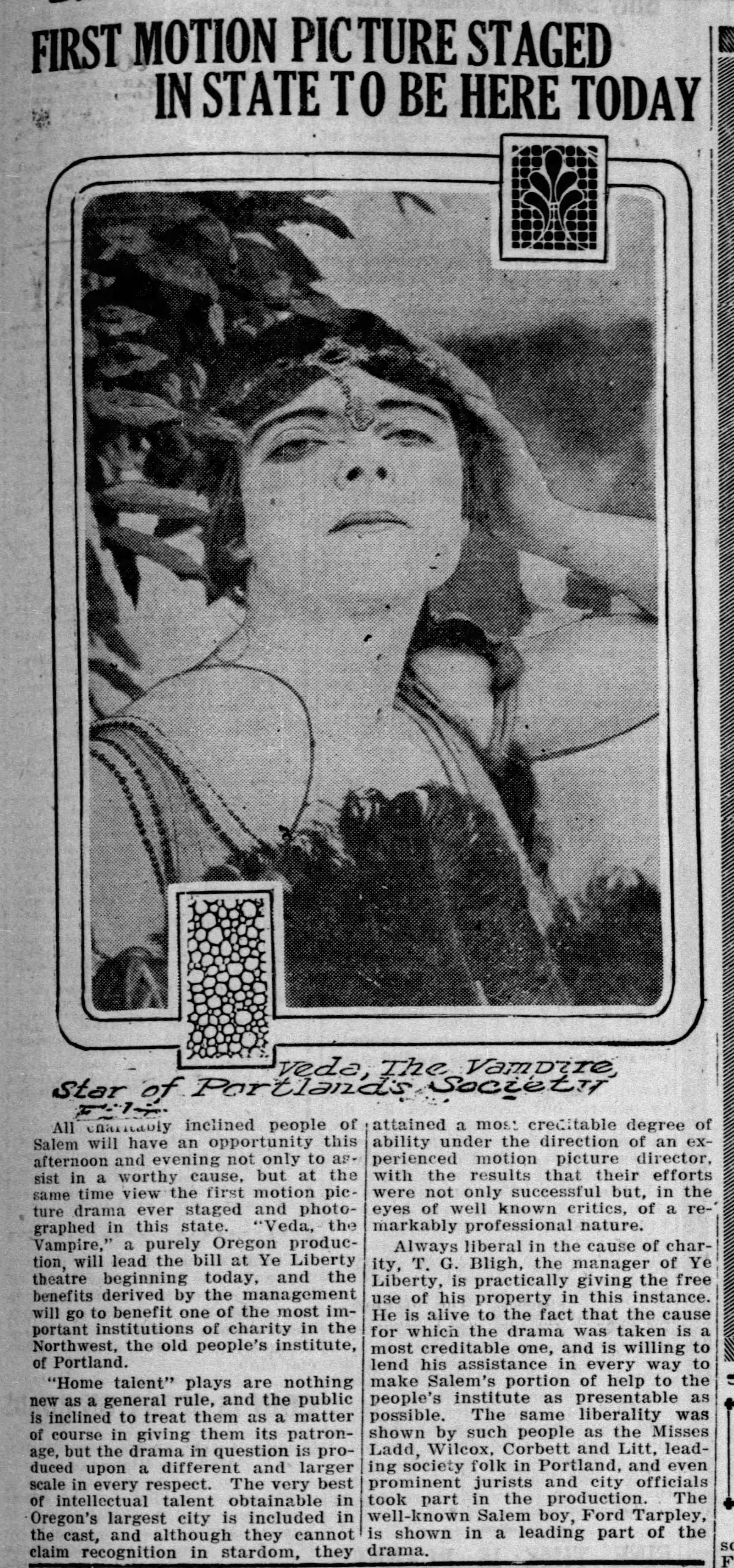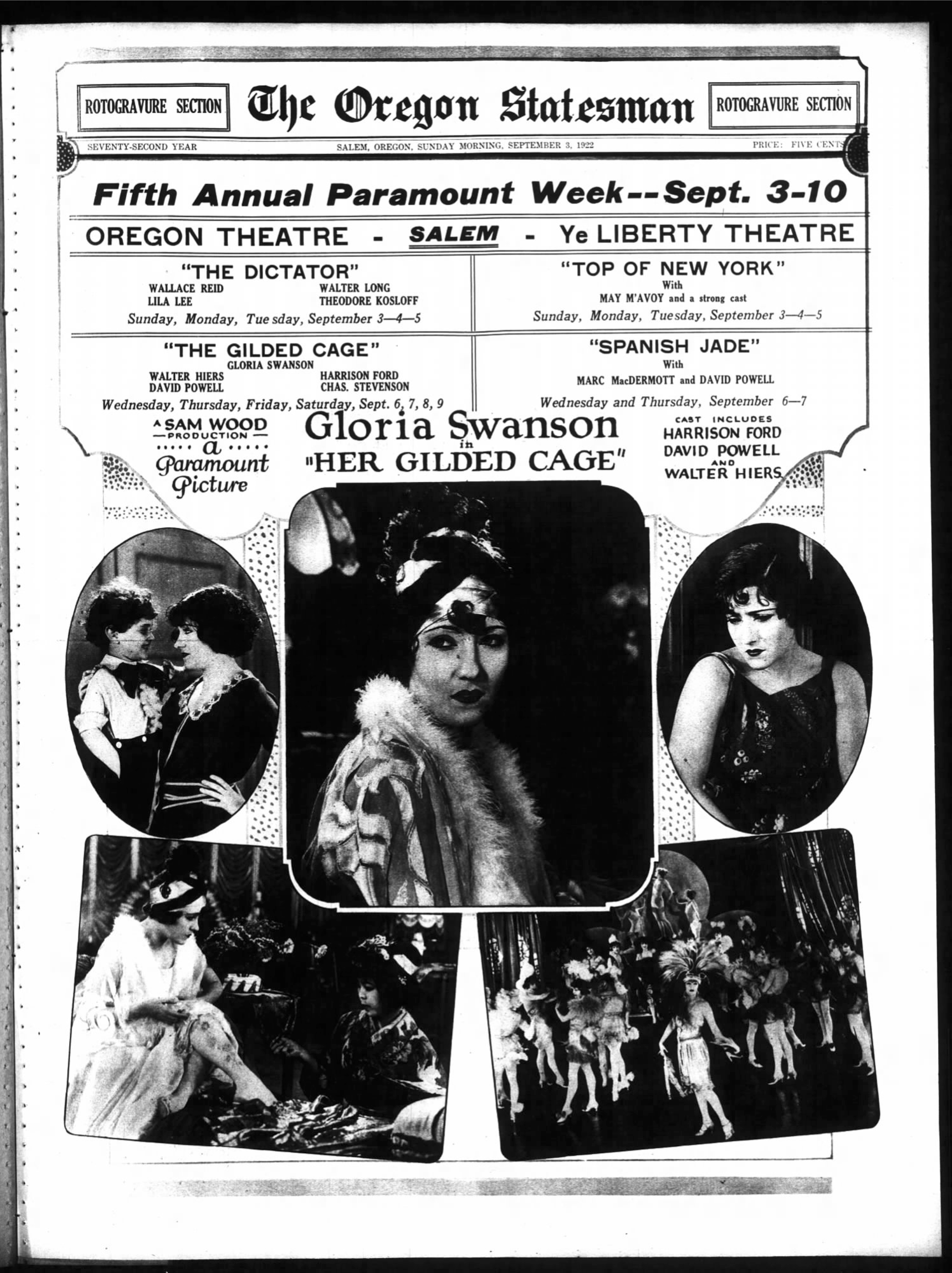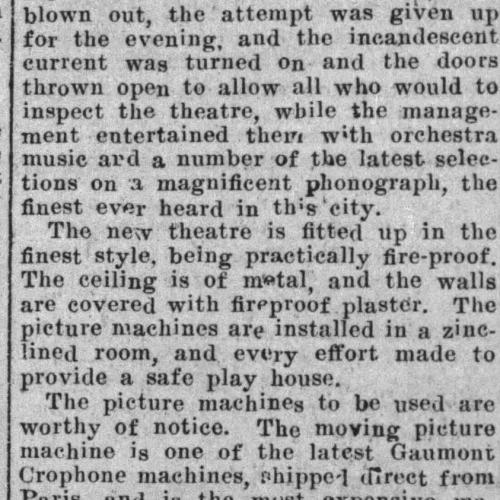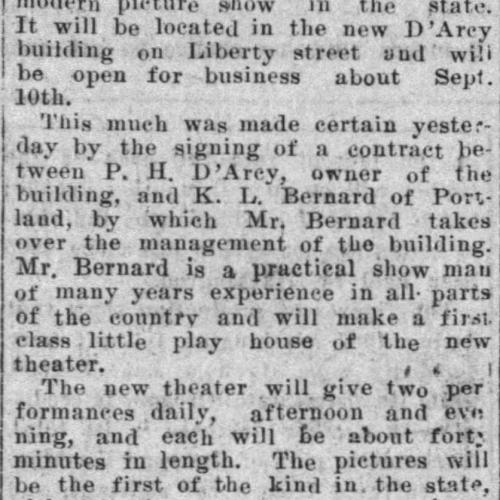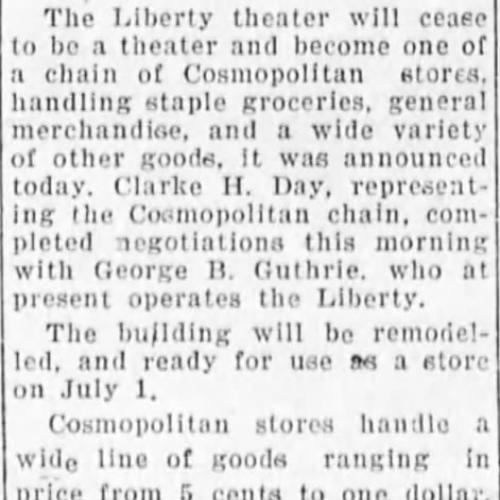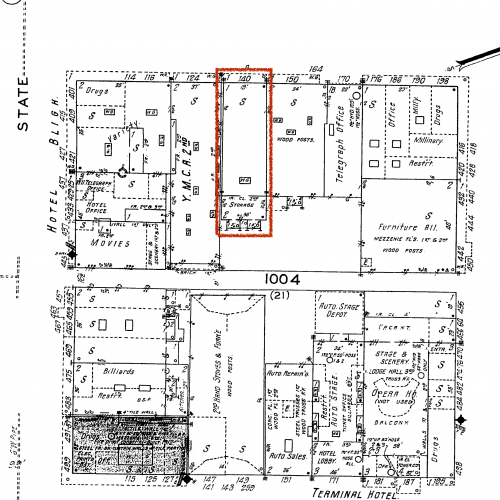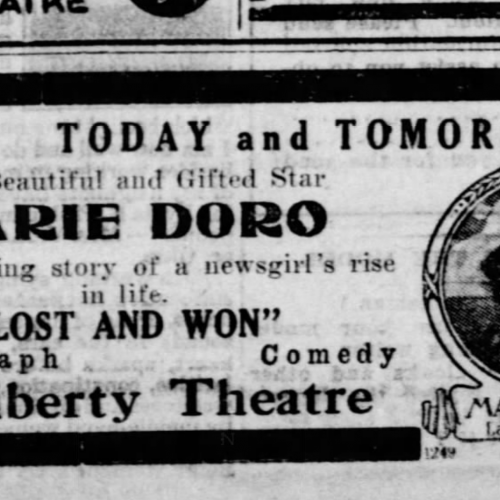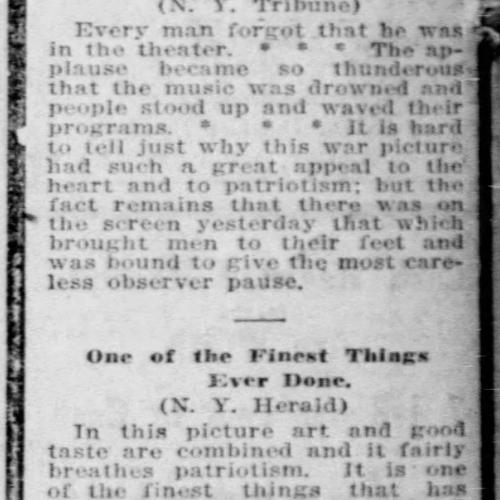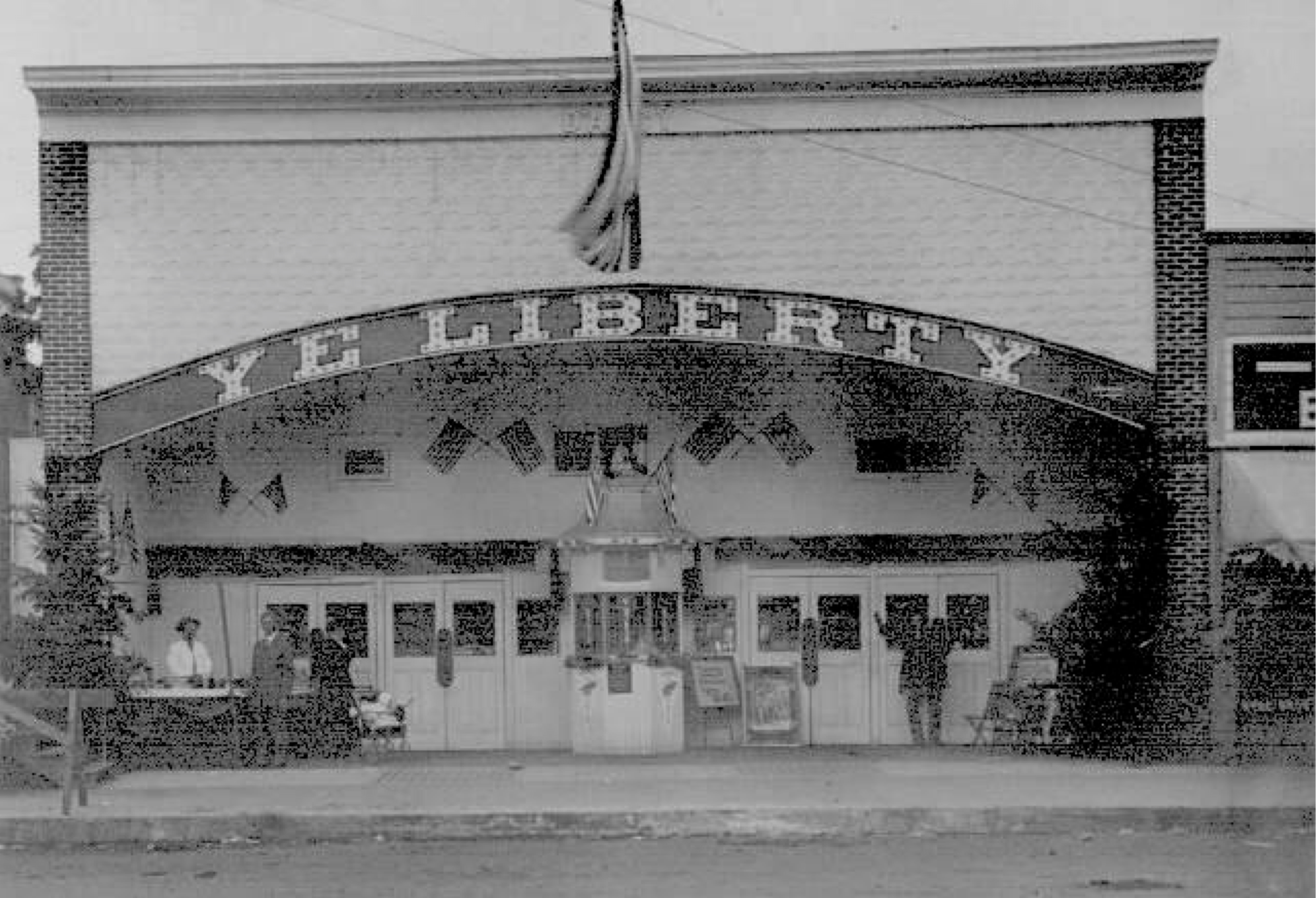
Ye Liberty opened in early September 1908 to a large crowd of 1,000 people who were nonetheless disappointed when there wasn't enough electricity to run the projector.
In the late teens and early twenties, Ye Liberty tended to only use large newspaper spreads to advertise key films. Key actors or directors might receive a quarter-page ad once a week. Other than that Ye Liberty’s promotional methods were small box ads and some small blurbs promoting other films. Certain films received only one or two days of advertising, while others, like D.W. Griffith’s Her Condoned Sin received promotion for weeks before they opened. Still, quarter-page ads for Ye Liberty films were relatively rare compared to those appearing in newspapers for films showing at other theaters. It may be that Ye Liberty provided a different fare than these other theaters, or simply that Frank Bligh chose a different newspaper tactic.
An exception to this trend is an advertising spread for the “Fifth Annual Paramount Week” in early September of 1922. During this week a series of Paramount productions were shown at Ye Liberty and the Oregon Theatres. Four full pages, advertising the films being shown and presenting numerous screen captures from the films, were added to the back of the Statesman Journal on this occasion.
T. G. Bligh, owner of Ye Liberty in the mid-nineteen-teens, was extolled in Salem for his philanthropy. One example of this in Ye Liberty’s commercial practices occurred in 1916, when he agreed to show Veda the Vampire, a film which had been produced in nearby Portland. The film was a purely home-grown project, being filmed in the homes of some of Portland’s most well-known residents, written by a local Portland man, and casting local talent in some of the roles. The proceeds from the film’s showing at Ye Liberty were to go to benefit an old people’s home in Portland, and the papers made much of the generous spirit of the multiple Salem exhibitors who agreed to show it as a charity fundraiser.
In 1917 Ye Liberty appears to have slightly rebranded itself, dropping “Ye” from its name in most cases. Beginning in July, the generic black-bordered box that advertised upcoming films began saying simply “Liberty Theatre.” Usage of the name is inconsistent in Salem papers, but by the early 1920s, most references to the theater seem to refer it as “the Liberty.” No change of management is known to have taken place in 1917, and it is likely that Frank Bligh simply changed the name in an attempt at modernization.
The theater closed in spring 1925 and was remodeled into a department store.
